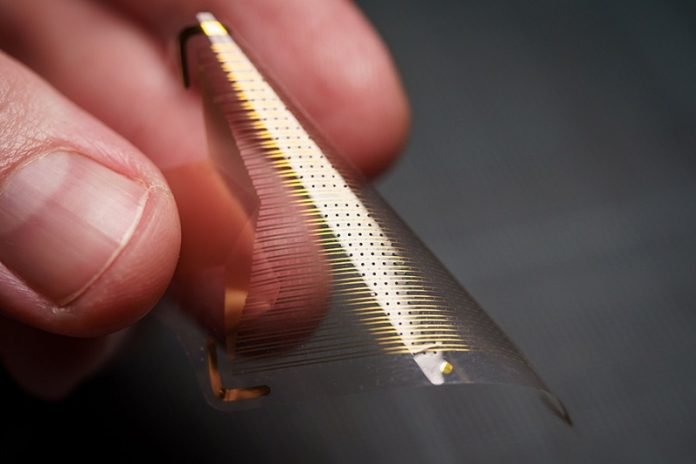
A team of engineers, surgeons and medical researchers based at the University of California San Diego has developed brain sensors that record electrical signals directly from the surface of the human brain in high resolution.
The thin, flexible devices are composed of densely packed grids of 1,024 or 2,048 embedded electrocorticography, or ECoG, sensors.
Standard ECoG grids typically have 16 to 64 sensors; custom-made research-grade grids have 256 sensors.
High-resolution recordings of electrical signals from the surface of the brain could improve surgeons’ ability to excise brain tumors, treat epilepsy and create opportunities for brain-computer interfaces.
Recording brain signals at such high resolution could minimize damage to healthy brain tissue during invasive surgeries, and help surgeons more precisely locate diseased or damaged areas of the brain.
High-resolution ECoG grids could also lead to a more profound understanding of brain activity and function and improve treatment protocols and outcomes.
The technology could be adapted for use in implanted devices to help treat neurodegenerative conditions like Parkinson’s disease that benefit from electrical stimulation, and improve surgeries to remove brain tumors or treat drug-resistant epilepsy.
Efforts are underway to prepare the grids for use in clinical trials.
The team published the research in Science Translational Medicine.



